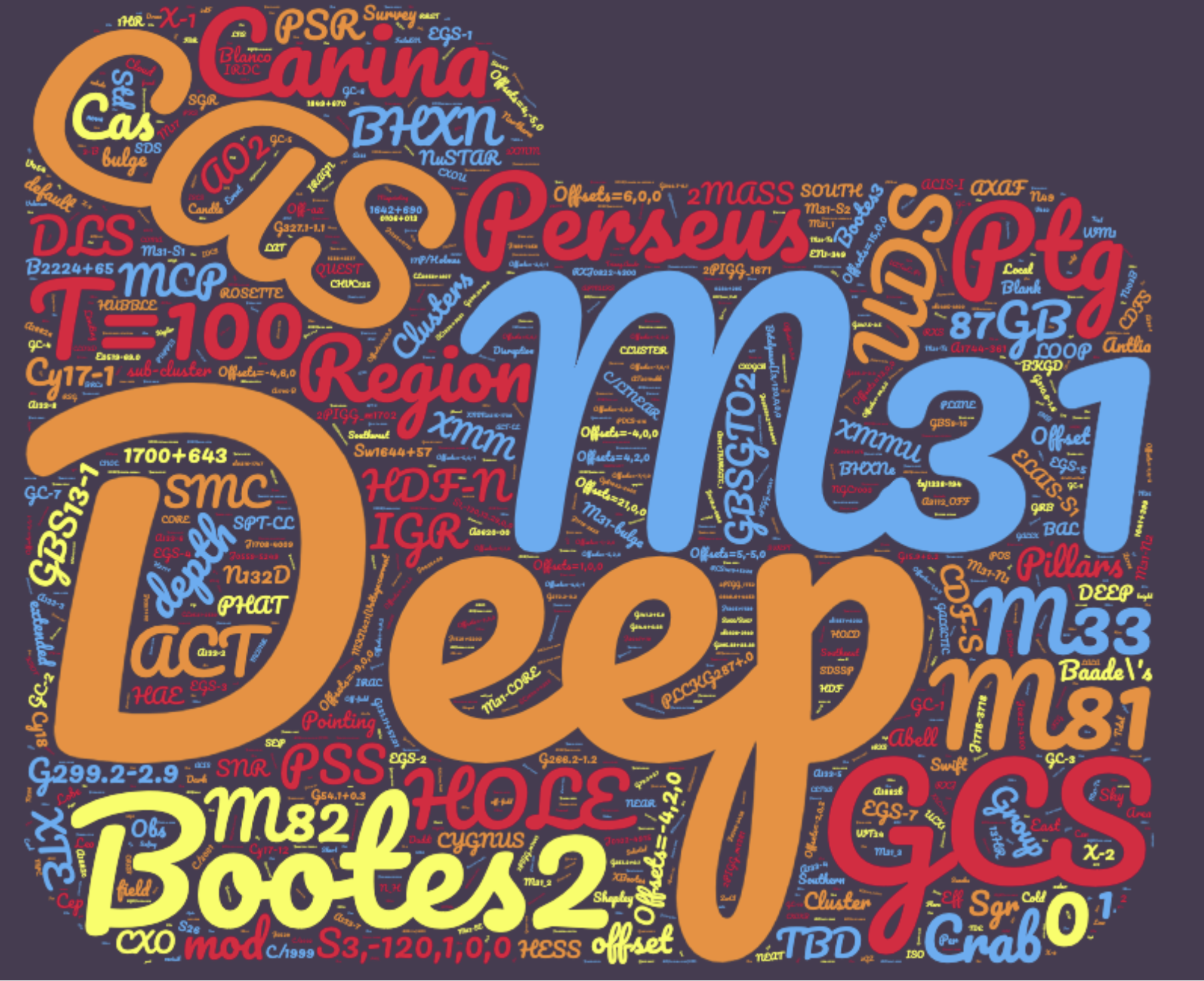What's in a Name? Updating Target Names for a Better Archive
Raffaele D'Abrusco
The beginning of wisdom is to call things by their proper name. – Confucius
The statement “What’s in a name? That which we call a rose by any other name would smell as sweet.” is hardly true in our field, where the understanding of the essence of the phenomena that we observe and the names that we use to identify them have been intimately intertwined for millennia. Through a complex accretion (and sometimes deliberate stratification) of knowledge (and many, many mistakes!) astronomers have learned to value widely recognizable, unique, informative and possibly standard designations of astronomical objects. These names, ideally, would accurately reflect their fixed and quantitative attributes (sky position, facility, instrument, catalog designation, time of the discovery, etc) and express the current understanding of the nature of their source and/or of the aspect of its phenomenology we are observing.

Figure 1: Word-cloud of the target names of archival, public observations considered for replacement (don’t worry, most of the words displayed below are perfectly fine and we just edited/improved/removed other sub-sections of the original target names!)
Let’s be clear: there is no denying that a universal naming framework for astronomical sources might be unrealistic and that, most importantly, even finding the “perfect” name of an astronomical source might be an ephemeral success bound to, just like almost everything else in astronomy, continuous, labor limae refinements and adjustments. Nonetheless, it is our daily duty and responsibility to embrace the challenge and verify, check and correct – when necessary – our choices in order to leave a better organized, easily discoverable and accessible “Universe of astronomical data” behind us.
More practically, the scientific production of a mission can be only maximized when its data holdings are as easily discoverable as possible through both spatial coordinates-based and name-based searches. This is especially true for the Chandra Observatory Archive, which contains almost 19,000 pointed science and calibration observations whose main attribute is the identity of the observed object or region of the sky.
For this reason, during the last year, the Chandra Archive Operation team has identified 5181 unique target names of public, archival Chandra observations taken through the end of 2016, that provide no or insufficient clues about the identity of their targets, contain typos, errors, or extraneous (i.e. not related to the target) sub-strings. All of these faulty designations have been recently replaced throughout the public Chandra data interfaces with new target names that are almost always uniquely associated with the correct coordinates by services like the CDS Sesame and NED name resolvers. The names of the deep and large fields observed over multiple Chandra cycles have been consolidated and homogenized, when needed, to facilitate their discovery. New target names have been selected to reflect, whenever possible, the original intended target names and preserve their historical value as accurately as possible. Changes to the target names of observations taken from 2017 onward have been postponed to minimize potential disruption to researchers that might be still actively working on them. The details of this project, including the list of all target names that have been changed and the corresponding replacements, can be found here.
The clean-up of the archival observations is only the first step of a larger project whose goal is to help our community to determine effective names for new Chandra targets as soon as they are proposed for observation. Starting later this year, detailed instructions on how to select informative and up-to-date target names will be added to the Call for Proposals and to the Chandra Proposal System (CPS) online documentation. So, stay tuned and thanks for helping us in this endeavor!